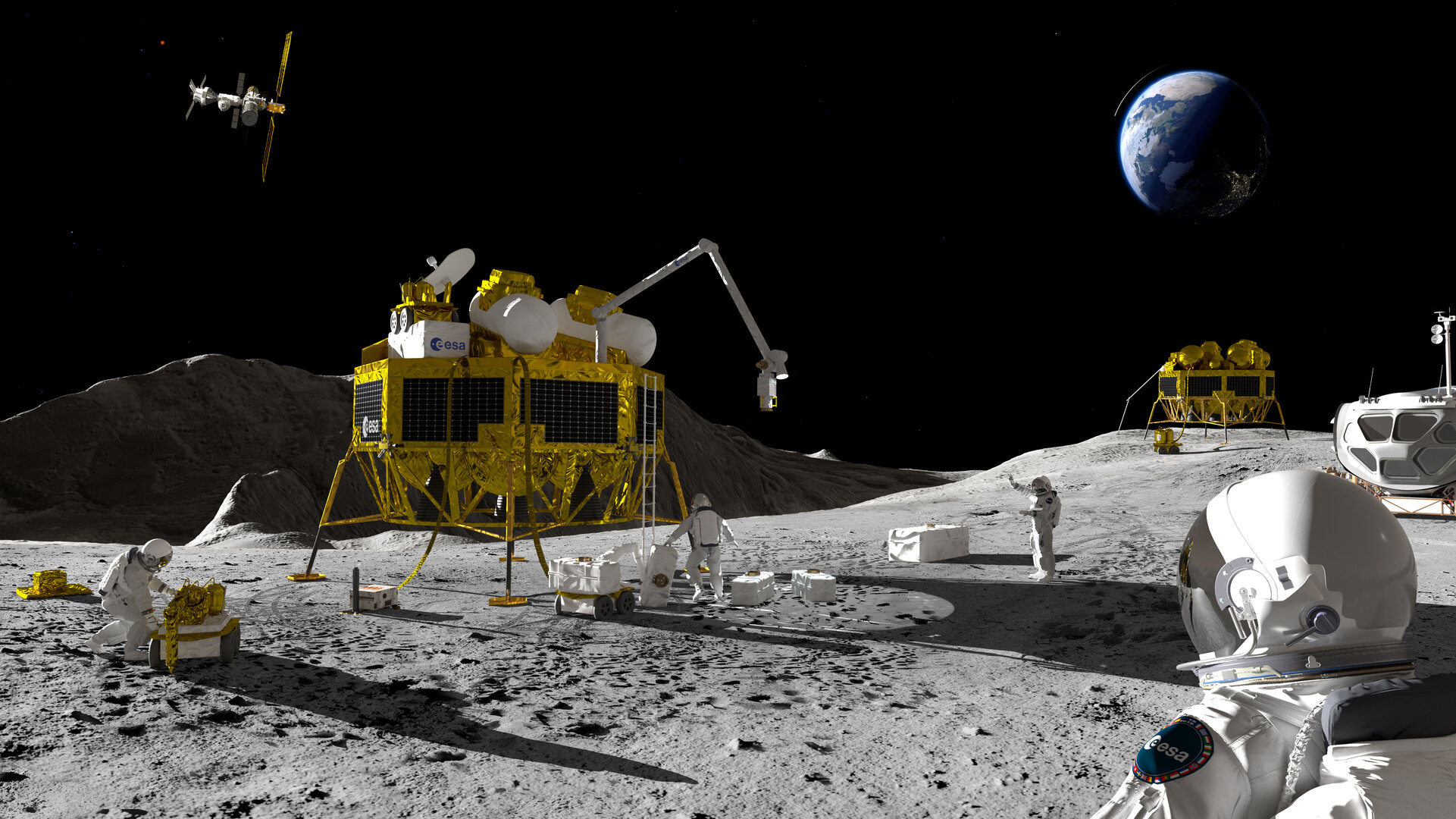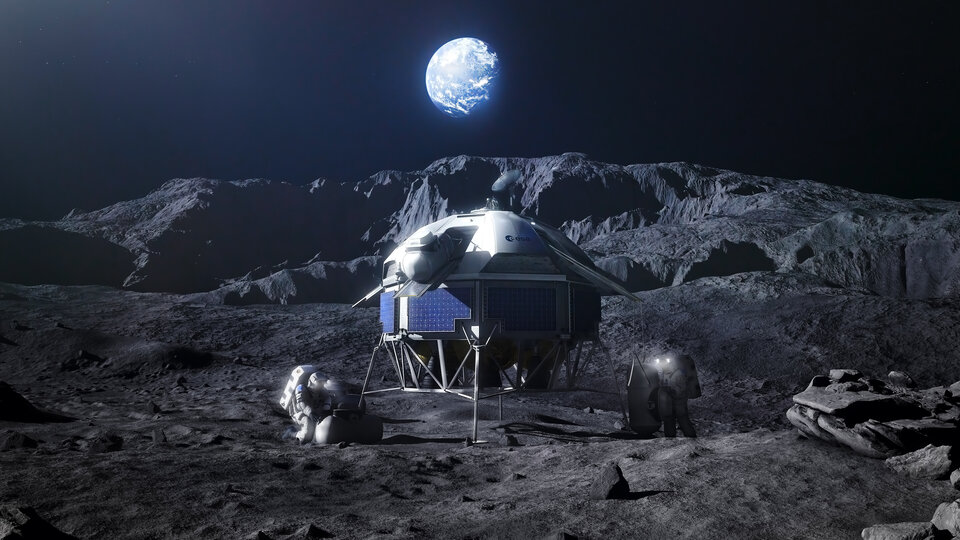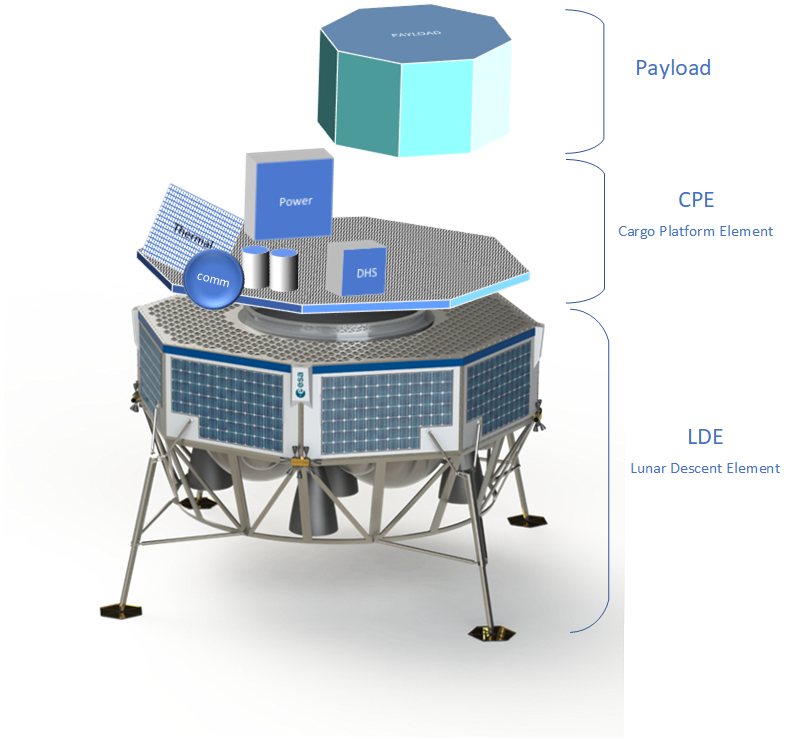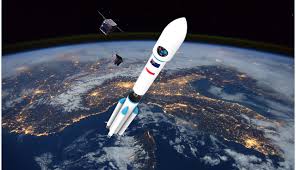Europe’s Lunar Ambitions Take Flight: ESA’s Argonaut Lander Nears a Major Milestone
13th Jan 2025
The European Space Agency (ESA) has alluded to a possible contract signing for the construction of their lunar lander, Argonaut. During the agency’s yearly press briefing, Director General, Josef Aschbacher, outlined the possible contract award for the construction of the lander’s descent element is to be signed sometime in 2025. Little information has been released on the landers construction, but the messaging in the press conference has indicated Argonaut is making good progress.
The annual press briefing that lead to the Argonaut breakthrough
While the announcement was fleeting, Aschbacher did affirm “we are signing the contract for the Lunar Descent Element [for Argonaut].” This signals a significant milestone is on the brink, in addition to other Lunar commitments outlined in the briefing…
- ESA’s Moonlight mission, a satellite constellation that will enable communication and navigation support for Europe’s Moon activities, will enter the design phase this year.
- ESA’s Lunar Pathfinder will finalise its assembly and testing phase.
- Finally, Aschbacher said ESA will install LUNA – a Lunar gravity system. Once installed, it will simulate the gravity experienced on the Moon to enable greater preparation for astronauts.
Aschbacher didn’t give a specific date. Yet, his commitment was further echoed by ESA’s Director of Human and Robotic Exploration, Daniel Neuenschwander, who took to LinkedIn to confirm ESA’s plans and provide a timeframe. “A pivotal step for Europe’s lunar ambitions with the descent element contract signature expected in Q1 2025 [for Argonaut],” Neuenschwander said.
ESA’s Lunar Lander: Argonaut

Poised to be ESA’s “autonomous access to the Moon”, Argonaut is said (by ESA themselves) to allow “us to play a major role on the surface of our natural satellite.” The 6 meter tall lander will offer payload delivery, act as a lunar rover, and provide power for Moon missions.
Argonaut has the ability to deliver “2100 kg worth of cargo… equivalent to a camper van”. The lander is also poised to land unrestricted on any area of the Lunar surface. But interestingly, the hot topic of the press briefing, Argonaut’s decent element, is a key piece in the landers three component structure. ESA said the decent element is designed to enable landing on the lunar surface as well as it’s flight to the Moon.
ESA stated that Argonaut could pique strong interest from key partners due to its cargo delivery capabilities. Although nothing is set in stone, ESA has already placed Argonaut in the same conversation as NASA’s Artemis mission. The agency said: “Argonaut could be an independent complement to the Artemis programme offering cargo delivery and more.”
How Argonaut Could Support International Space Interests
Due to the long nights that the Moon faces – 14 Earth days to be exact – ESA argues that Argonaut could provide considerable support for the Artemis astronauts. To do so, ESA states that food, water, air, and essential equipment for scientific studies could be transported by Argonaut.
In the interests of supporting international lunar efforts, ESA says: “the European lander can deliver much more than simple cargo: it could function as a survival kit for the explorers of our new frontier.” While possible partnerships for future Lunar exploration missions could be on the horizon, official announcements are yet to materialise.
When will Argonaut launch?

An Ariane 6 launcher will transport the lander to the Moon’s surface, launching from the Kourou launch site in the French Guiana. ESA has noted that “launch to landing could take anywhere from a week to a month”. This is due to orbits and mission design that may impact Argonaut’s journey. Nonetheless, in a ‘Mission Reinforced Phase A/B 1’ document, ESA detailed that Argonaut’s launch and landing date could happen sometime in 2031. Watchful eyes will remain on the lander as ESA works to maintain progress.


![January’s First Week In Photos: Northern Lights, Moon-Venus Conjunction & More! [1-7 Jan] January’s First Week In Photos: Northern Lights, Moon-Venus Conjunction & More! [1-7 Jan]](https://orbitaltoday.com/wp-content/uploads/2025/01/Astronauts-Fingernail-Clipping-1-300x200.jpg)




Thank you for your comment! It will be visible on the site after moderation.